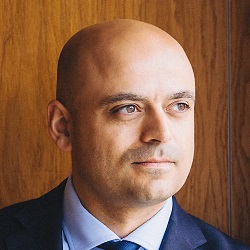An alternative business structure that aims to combine the best of traditional law firms and of the new-model fee-share practices has gone live.
Recruits to Clearlake Law join as partners and can be as involved in the firm’s management as they want, while also retaining around 85% of their fee income.
The City-headquartered practice is the brainchild of Dan Stanton, who qualified at US firm Weil Gotshal & Manges and then worked with contract lawyer providers such as LOD and Obelisk Support. He set up his own corporate and commercial firm, Stanton & Co, in 2014.
He told Legal Futures that, in 2020, he began thinking “if there was a better way to build an organisation that allowed people to come together and build their own practices in a law firm but still benefit from the consultancy model”.
He closed Stanton & Co 18 months ago to concentrate on launching Clearlake, a process that has taken longer than he expected. It received its alternative business licence from the Solicitors Regulation Authority in October.
The firm was positioned at “the premium end of legal consultancy space and doing things slightly differently”, Mr Stanton explained.
On the client side, the market was “crying out for improvements” and always looking for premium services that are “better, faster, cheaper”.
His answer was to run a lean model to keep rates down and not only use technology but also have a company to build and invest in it. The aim was to produce “customised tech solutions the partners can sell on to clients”.
He argued that this was a better way than leaving it to technology companies. “There needs to be a middleman who understands the client’s problems and is supported by a tech team to produce a solution that deals with the specific problems clients have.”
On the lawyer side, he went on, he wanted to keep the best of both the partnership and consultancy models, “and leave behind the worst”.
The strength of traditional firms, he said, were partnership, sharing costs and risk, and building a brand bigger than one person, as well as being part of the decision making. But partnership was also the downside, particularly when it came to “squabbling over profit allocation”.
So while Clearlake is a partnership and costs are shared, they are kept under close control, meaning partners and their teams typically retain 85% of their fees (bigger billers will keep more, lower billers less, but it is unlikely to be below 80%).
Mr Stanton argued that for lawyers working at consultancies that take a bigger share for central costs, after tax they could only be taking home 40% of what they billed.
While the solicitor saw few downsides to working as a consultant, “the model is starting to creak a little bit”. The use of a personal services company had become “a bit clunky”, especially with corporation tax and dividend tax on the up.
There was also an IR35 risk – where people working as contractors are effectively employees – and Mr Stanton said there was government interest in “how intermediaries receive fees and pay their directors and shareholders”.
Joining as an equity partner meant better tax treatment. Further, “you’re part of strategic decision making, part of building a business. But you do away with some of the squabbling around profit allocation”.
But he stressed that partners did not have to be involved in management: “They can be passengers if they want.”
The firm is an ABS because of a corporate partner that he owns which, in time, “is likely to be the vehicle for other investors to come in”.
This vehicle funds the marketing and business development team now in place. Partners pay a 15% commission if they choose to accept the work they generate. Mr Stanton said this removed the risk from the lawyers.
He is now in the process of hiring the first tranche of a dozen partners and argued that, particularly as a result of technology replacing the more routine work, “in 20 years, law firms will look more like Clearlake than Slaughter and May”.















Leave a Comment